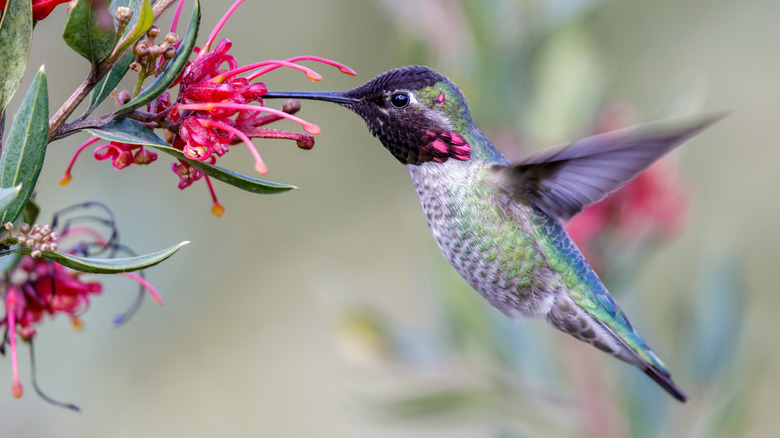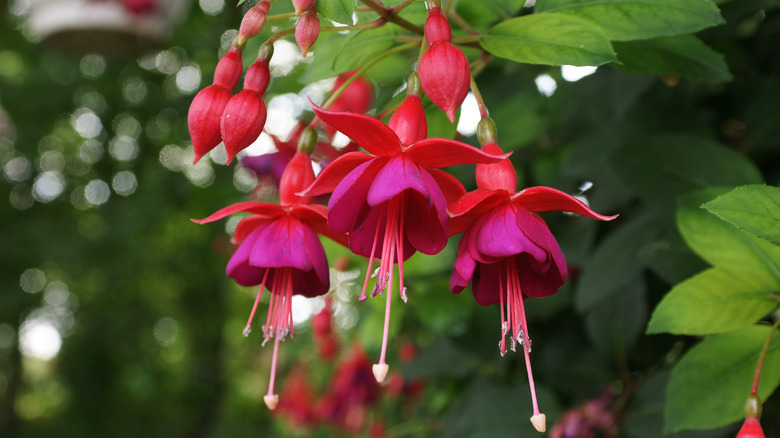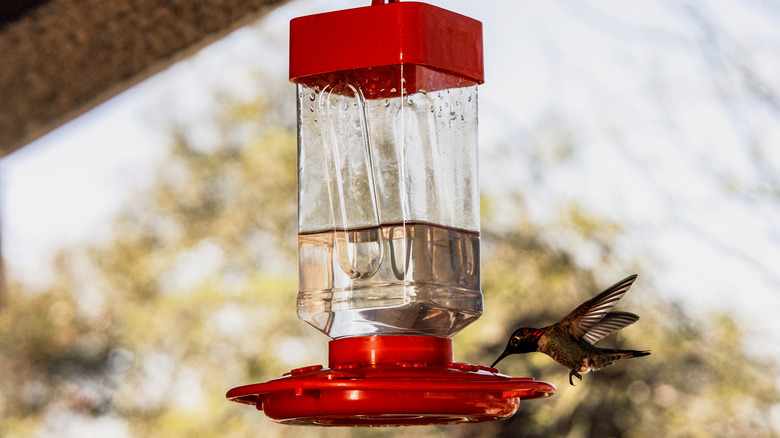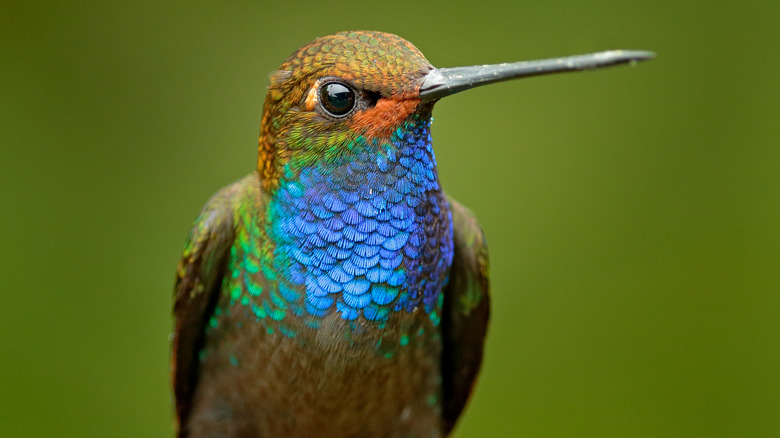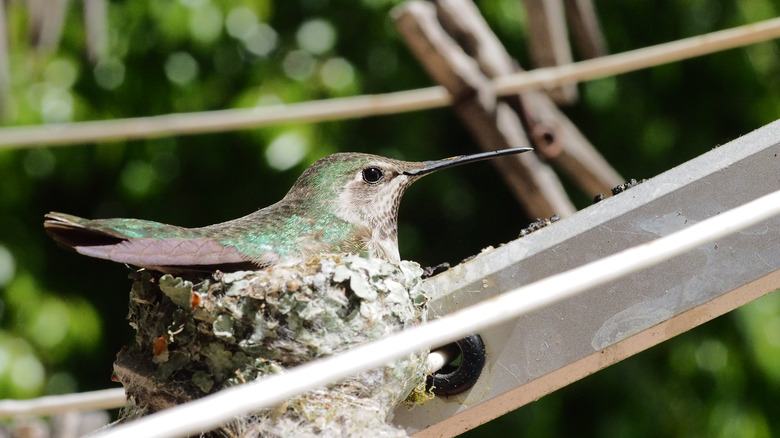How To Attract Hummingbirds To Your Garden
If you've successfully lured hummingbirds to your garden in the past, then you know how magical it can be to watch them dart between blooming trees and plants as they feed on nectar. A well-thought-out hummingbird-friendly garden can keep you and your family entertained for many hours on warm days. But it's no secret that it can be a tricky process. You'll need to set the scene by planting the right flowers, creating rest areas, supplying water and food, etc.
It can take quite some time before these birds become a staple in your garden. But when they do, you'll be pleased because they excel at remembering the location of their favorite feeders, informs Perky-Pet. Still, you shouldn't be afraid to change your landscape if you suspect things aren't working because once you attract them in groups, you'll have them visiting for many years, says Gardening Tips. Follow our suggestions to create a dreamy garden filled with these stunning creatures.
Plant the right flowers in your garden
Fortunately, hummingbirds don't discriminate, but they're partial to tubular and nectar-rich flowers, according to The Old Farmer's Almanac.
The most popular varieties for annuals include false heathers, petunias, salvias, snapdragons, and calibrachoas, says The Spruce. These flowers come in various colors, and you may want to consider planting a few combinations to liven up your garden year-round. Hummingbirds enjoy feasting on nectar-rich perennials, so your options include Agastache, cardinal flowers, coral bells, four o'clocks, fuschias, lantanas, and weigelas. Most of these flowers grow in USDA zone 10 or less during the warmer spring and summer months.
Plant these flowers scattered across a large garden bed or separate them into smaller containers that you can place or hang on your patio. Remember that hummingbirds are most attracted to vibrant red and orange flowers that are conspicuous from a distance. It's fine to incorporate a rainbow of plants in your hummingbird garden, but you should initially focus on warm-colored flowers to draw in the birds.
Install a water source
A water source is essential to keeping a bouquet of hummingbirds happy in your garden. These winged creatures prefer water features such as misters, drippers, or shallow basins, as explained by Gardening Tips. If you decide to install a birdbath instead, it must be shallow and elevated; this is critical because they prefer not to fly to the ground to drink water or bathe, per Better Homes & Gardens.
On average, hummingbirds drink almost eight times their weight in water daily. Though a lot of this comes from the water found in nectar, they supplement it with the dew they find on leaves or water set out for them. One easy way to give these beauties drinking water is to fill a water feeder with four parts water and one part sugar that has been boiled for five minutes and then cooled, explains The Gardening Cook. It would help if you also kept a close eye on your feeder as they are prone to growing mold after a short period.
Spoil them with yummy bugs
Hummingbirds require a lot more than just water and nectar. Like most bird species, they eat bugs too, and the protein they receive from these insects keeps them and their young healthy. Midwest Living suggests growing bug-loving plants native to your area to attract insects. According to The Gardening Cook, hummingbirds love beetles, aphids, flies, mosquitos, and specific species of spiders and wasps.
When creating a hummingbird-friendly garden, remember to avoid insecticides and other repellents. Bugs killed by these chemicals might be eaten by unsuspecting hummingbirds and lead to their death. Petals and nectar can also absorb the insecticide, causing the birds to fall sick or suffer a worse fate.
If you're worried about the insect population getting out of hand, be assured that nature takes care of itself in an ecosystem. Besides, these birds love their snacks and will not hesitate to flock to your garden in droves to feast on these insects all year-round.
Create shelter and nesting areas
These birds need a place to rest after feeding or splashing around in a birdbath. Interestingly male and female hummingbirds have different preferences when it comes to shelter. According to Better Homes & Gardens, the males aren't picky when perching, and they'll go for any twig, horizontal pole, or wire they can grip with their tiny feet. Females, on the other hand, are pretty different, preferring to nest in trees or shrubs.
When creating your hummingbird-friendly garden, you should make sure that you accommodate both preferences. You'll want to string up some wires or place smaller L-shaped poles on the ground for the males. Similarly, you should plant a few small bushes or trees near your flower beds, such as scarlet buckeye, weigela, or a butterfly bush for the females. As per Gardening Tips, keep in mind that hummingbirds will not perch or nest in birdhouses; instead, they will choose odd open spaces like atop a wire or clothesline. It also would help if you never cleared spiderwebs, as the birds will use those fibers and small twigs, plant stems, and even white dandelion floaties to create their nests.
